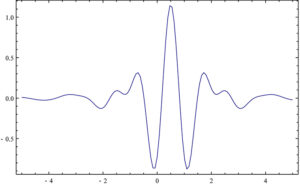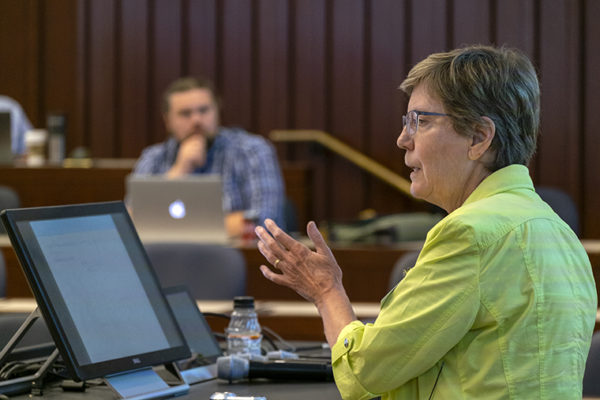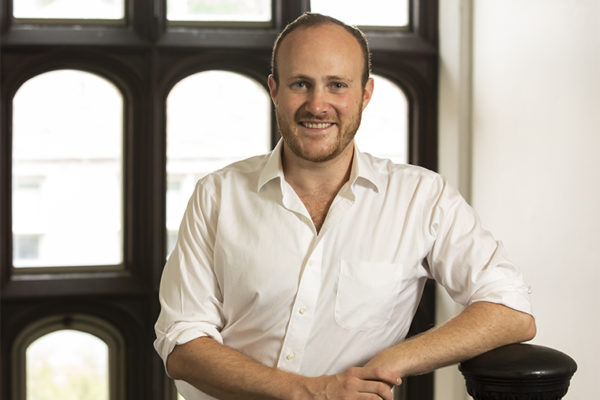Washington University in St. Louis mathematician Steven G. Krantz has turned his focus to modeling COVID-19 in hopes that better predictions can help lessen transmission and save lives.

Krantz is working with Arni S.R. Srinivasa Rao, director of the Laboratory for Theory and Mathematical Modeling in the Division of Infectious Diseases at the Medical College of Georgia at Augusta University.
Their latest study — now available on the medical preprint server medRxiv — predicts the number of hospitalizations that could occur for people over age 65 with one or a combination of three underlying conditions: hypertension, cardiovascular disease and lung disease.
Researchers estimate that there are 13 million such individuals in the United States who need to be protected against COVID-19 to reduce a large number of hospitalizations and associated deaths.

The novel models rely on a mathematical tool called wavelets. Working with Rao, Krantz has prepared in the past six weeks five publications for improving a variety of projections about the novel coronavirus.
“Wavelets provide, for the first time, a way to see the difference in magnitudes between the reported size and the adjusted size of an epidemic,” said Krantz, professor of mathematics and statistics in Arts & Sciences.
A wavelet is an oscillation which — as the name implies — goes up, peaks and then recedes like a wave. First used in signal processing more than 30 years ago, wavelets are useful in modeling epidemics because they can help bridge a gap in understanding by estimating the amount of underreporting. The higher the wave, the higher the underreporting — and a lower wave means improved reporting.
Immediate, near-term predictions about new COVID-19 infections
The newest model that Krantz and Rao have prepared provides immediate and near-term future predictions about the number of new COVID-19 infections among high-risk populations. Not every COVID-19 infection requires hospitalization, and better predictions about the potential volume of patients requiring inpatient care can assist in resource planning, the researchers noted.
Hospitalizations of patients aged 65 and older with more prevalent underlying conditions could range between 31,633 (20,310 non-ICU hospitalizations and 11,323 ICU admissions) to 94,666 (60,779 non-ICU hospitalizations and 33,866 ICU admissions) cases from April to June 2020, according to the new model, which has not yet been peer reviewed.
Krantz and Rao have hastened to share their related wavelets work in general scientific journals, including Infection Control & Hospital Epidemiology, Current Science and the Journal of Theoretical Biology. Rao is the corresponding author for the hospitalization study.
Using publicly available COVID-19 data from sources like the World Health Organization, they have modeled underreporting, including underdiagnosis, before the first peaks in various countries. They have also focused on what was happening in specific countries. For example, one of their findings, based on limited data, suggests that the U.S. may have had up to 90,000 COVID-19 cases in early March, even though official counts showed only 500 cases at the time.

“I can tell you that if I submitted a pure math paper to a pure math journal and tried to talk the editor into fast-tracking it, I would, in most instances, be laughed at,” Krantz said. “But obviously the COVID-19 epidemic is a vital and important topic, and the work that Rao and I are doing is timely and significant.
“Finding the true magnitude of a pandemic is important in framing policies,” Krantz said. “Considering only the reported magnitude is insufficient. The feedback we get from our readers is uniformly supportive and appreciative.”
“Finding the true magnitude of a pandemic is important in framing policies. Considering only the reported magnitude is insufficient.”
Steven G. Krantz
Krantz first met Rao about six years ago when Krantz was serving as editor of the Notices of the American Mathematical Society. The two started collaborating about three years ago, and Rao visited Washington University in 2018.
“Rao is a prominent mathematical modeler whose works are well known,” Krantz said. “He has been working on mathematical and stochastic modeling of epidemics like HIV, HCV and bird flu for the past two decades.”
“One possible reason that underreporting has not been studied for previous epidemics is that the daily reporting and updates were not taken as seriously as for COVID-19,” Krantz said. This is the first outbreak to garner such intense international attention to reporting in real-time.
Krantz has previously applied mathematical models to pharmaceutical concerns and also collaborated with a plastic surgeon in designing plastic surgery procedures using geometry and wavelets.
“That was satisfying because, unlike my pure math work, I could actually talk to non-specialists about what I was doing,” Krantz said. “I can also talk to non-specialists about my COVID-19 work, and the work is socially significant.
“It means a lot to me that my mathematics can have a social impact and perhaps even save lives.”
WashU Response to COVID-19
Visit coronavirus.wustl.edu for the latest information about WashU updates and policies. See all stories related to COVID-19.


